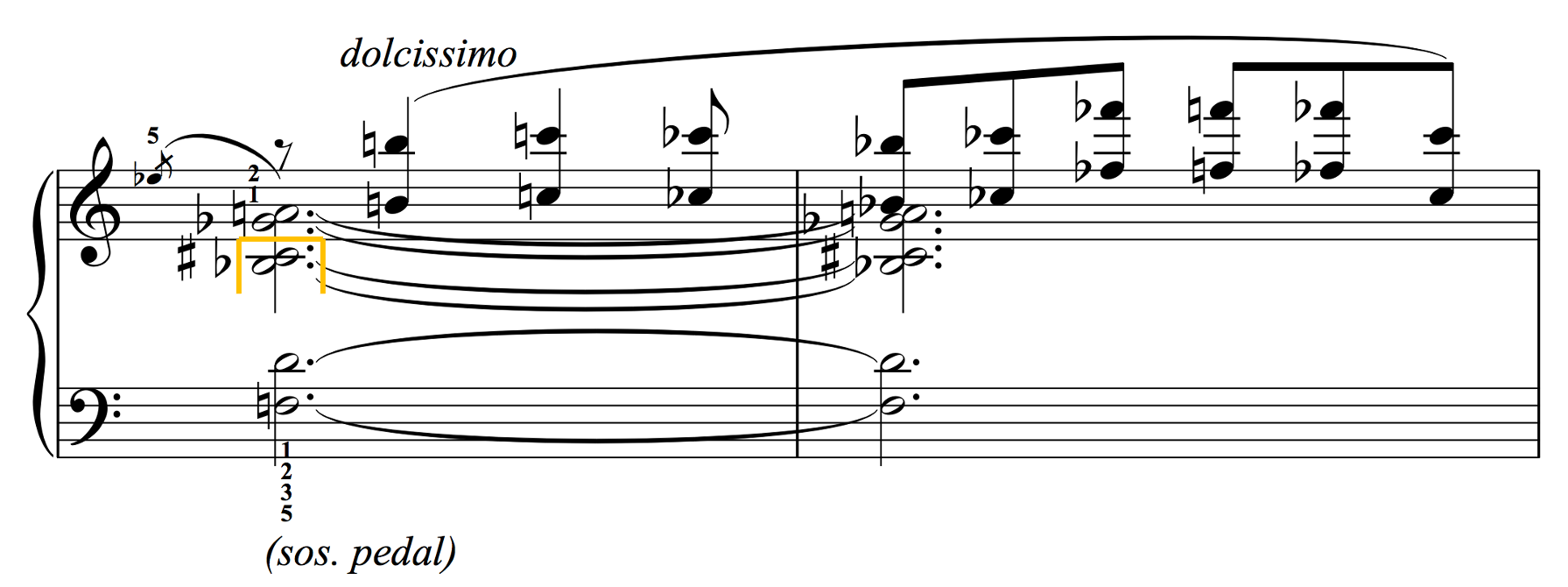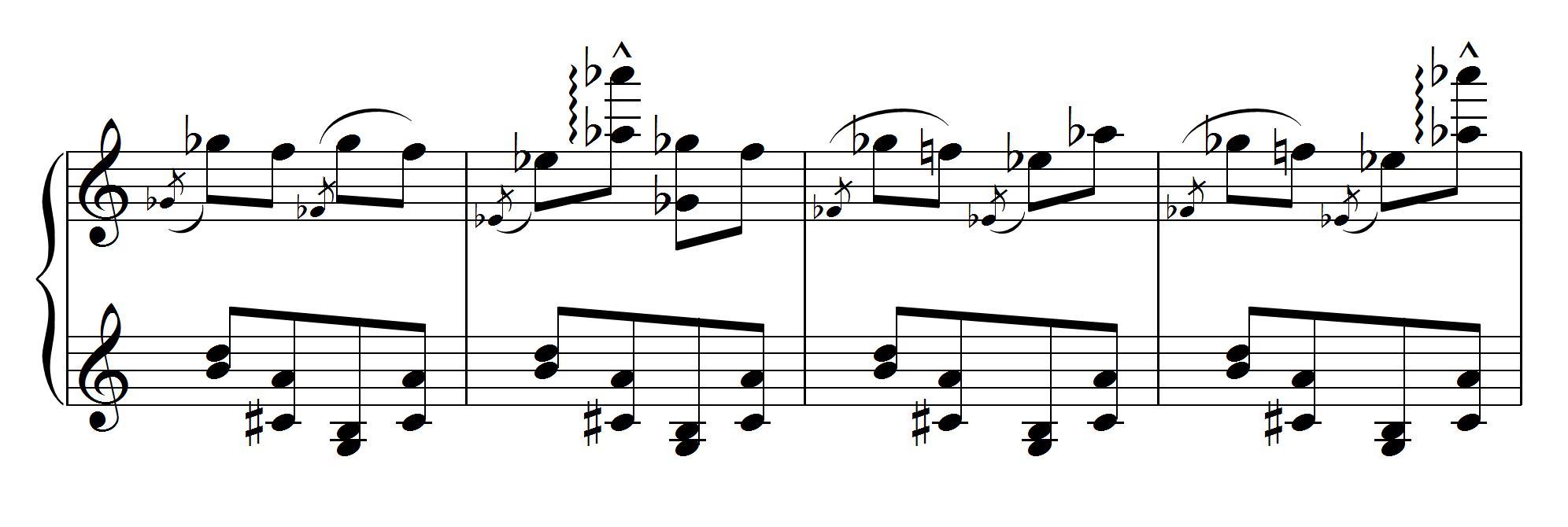“Playing the top note of the sixths with the right hand eliminates the stretch and allows greater control of the various articulations.”
Submitted by Michael Clark
Published on 1/1/2020

“Playing the top note of the sixths with the right hand eliminates the stretch and allows greater control of the various articulations.”
Submitted by Michael Clark
Published on 1/1/2020
Right hand in red, left hand in blue:



“I find this extremely awkward passage is easier with the hands mostly reversed. The crowding toward the end of the passage is alleviated somewhat by taking the bottom octave of the top staff in the left hand.”
Submitted by Michael Clark with thanks to Nancy Weems
Published on 1/1/2020

“Taking the C-sharp and B-flat in the left hand eliminates crowding and allows a legato connection from the preceding grace note. I catch the chord in the sostenuto pedal to allow clearer pedaling of the octave line.”
Submitted by Michael Clark
Published on 1/1/2020

“Reorganizing the notes as indicated allows pianists who cannot reach the tenth to play the whole chord simultaneously.”
Submitted by Michael Clark
Published on 1/1/2020
Original:

Suggested performance:

“The F-flat grace notes in mm. 105–6 are extremely awkward when played in the right hand. Catching them with left-hand 5 eliminates the crowding.”
Submitted by Michael Clark
Published on 2/13/2022
Original:

Suggested performance:

“Redistributing the notes in m. 110 eliminates an awkward hand crossing and allows the right hand to remain in a closer position to the succeeding octaves.”
Submitted by Michael Clark
Published on 1/1/2020


“Taking the B-flat from the lower staff into the right hand in m. 158 is the only way I can manage the awkwardness of this measure. When possible, taking the grace notes in the left hand facilitates a stronger sforzando on the arrival note.”
Submitted by Michael Clark
Published on 1/1/2020
Original:

Suggested performance:

“The B-flat grace note in m. 220 is extremely awkward when played in the right hand. Catching it with finger 5 in the left hand eliminates the crowding.”
Submitted by Michael Clark
Published on 1/1/2020

“The bottom voice of the treble staff can be incorporated into the left hand at the end of m. 22 to avoid crowding.
Submitted by Michael Clark
Published on 1/1/2020

“The lower notes of the top staff easily fit with in the left hand’s reach.”
Submitted by Michael Clark
Published on 1/13/2022

“Switching the right and left hand seconds in m. 48 slightly reduces the stretch in the left hand (every little bit helps in this piece) and establishes the new pattern in the left hand.”
Submitted by Michael Clark
Published on 1/1/2020
Original:

Suggested performance:

“This redistribution keeps the thumbs on the same notes in mm. 217–19.”
Submitted by Michael Clark
Published on 1/1/2020

“The left hand is positioned above the right in mm. 50–51. Taking the G in the right hand in m. 52 eliminates an awkward jump in the left hand and allows the left hand the opportunity to get below the right hand for the rest of the passage.”
Submitted by Michael Clark
Published on 1/1/2020

“The left hand is positioned above the right in the beginning of m. 218. Taking the B-natural in the right hand eliminates an awkward jump in the left hand and allows the left hand the opportunity to get below the right hand for the rest of the passage.”
Submitted by Michael Clark
Published on 1/1/2020

Submitted by Michael Lenahan
Published on 12/15/2022

“Switching to the right hand one note early makes this moment less crowded between the hands.”
Submitted by Michael Clark with thanks to Craig Nies
Published on 1/1/2020

“Taking the E-flat into the left-hand helps unclutter this crowded moment.”
Submitted by Michael Clark
Published on 5/24/2023

“Taking the E-flats in the right hand allows the left hand to stay in a low position and avoid crowding the right-hand.”
Submitted by Michael Clark
Published on 5/24/2023